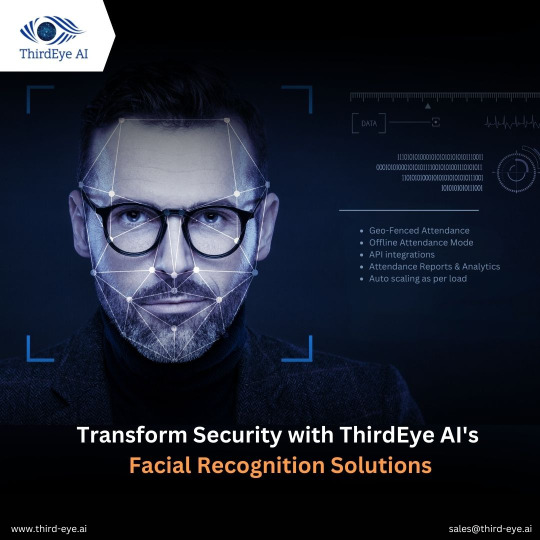#AI-based app customization
Explore tagged Tumblr posts
Text
Enhancing User Experience in Saudi Mobile Apps with AI

In the current digital environment, the triumph of mobile applications is deeply rooted in their user experience (UX). With the rise of artificial intelligence (AI), mobile apps are becoming more intelligent, responsive, and personalized. In Saudi Arabia, where the digital economy is rapidly expanding, integrating AI into mobile app development is not just a trend—it's a necessity. This article delves into how AI is enhancing user experience in Saudi mobile apps, exploring the benefits, challenges, and future prospects.
1. The Role of AI in Mobile App Development
Artificial intelligence (AI) has transformed numerous sectors, and mobile app development is certainly among them. In the context of user experience, AI plays a pivotal role in making apps more intuitive, efficient, and tailored to individual user needs. Whether it's through predictive analytics, natural language processing, or machine learning algorithms, AI enhances every aspect of the user journey.
1.1 Predictive Analytics for Personalized Experiences
One of the key advancements AI has brought to mobile app development is predictive analytics. By analyzing user data, AI can predict future behavior and preferences. This allows apps to offer personalized recommendations, content, and services, thereby improving user engagement and satisfaction.
1.2 Natural Language Processing for Better Interaction
Natural Language Processing (NLP) enables apps to understand and respond to user queries in a more human-like manner. In Saudi Arabia, where Arabic is the primary language, NLP can be particularly beneficial in providing seamless communication between the app and the user. By understanding the nuances of the Arabic language, AI can enhance the overall interaction quality.
1.3 Machine Learning for Continuous Improvement
Machine learning algorithms enable apps to learn from user interactions and continuously improve over time. This means that the more a user interacts with an app, the better the app becomes at meeting their needs. For businesses in Saudi Arabia, this translates to higher customer retention rates and increased loyalty.
2. The Importance of UX in Saudi Arabia's Digital Economy
Saudi Arabia is undergoing a digital transformation, with a significant focus on enhancing the digital economy. Mobile apps are at the forefront of this transformation, serving as key platforms for e-commerce, banking, entertainment, and more. In such a competitive market, delivering a superior user experience is crucial for success.
2.1 User-Centric Design: The Key to Success
A user-centric design approach is essential for creating apps that resonate with the target audience. In Saudi Arabia, this means considering cultural nuances, language preferences, and the unique needs of the local population. By integrating AI into the design process, developers can create apps that are not only functional but also emotionally engaging.
2.2 The Impact of AI on User-Centric Design
AI can analyze vast amounts of data to identify user pain points and preferences. This information can then be used to design more intuitive interfaces, streamline navigation, and offer features that align with user expectations. For example, AI can propose design modifications based on user feedback, ensuring the app stays relevant and user-friendly.
3. AI-Driven Personalization: A Game Changer for User Engagement
Modern user experiences are deeply rooted in personalization. With AI, mobile apps can deliver highly personalized experiences that keep users engaged and satisfied. From personalized content recommendations to tailored notifications, AI-driven personalization is a game changer for user engagement.
3.1 Personalized Content Recommendations
AI-driven algorithms can assess user behavior to suggest content tailored to their preferences. This is particularly valuable in entertainment apps, where users are more likely to engage with content that resonates with them. In Saudi Arabia, where digital content consumption is on the rise, personalized recommendations can significantly enhance user experience.
3.2 Tailored Notifications for Better Engagement
Notifications are a powerful tool for keeping users engaged with an app. However, generic notifications may often be seen as intrusive. AI can help by sending tailored notifications based on user behavior and preferences. This ensures that users receive relevant updates that add value to their experience.
4. Enhancing Mobile App Security with AI
Security is a top concern for mobile app users, especially when it comes to sensitive information such as financial data. AI can enhance mobile app security by detecting and preventing threats in real-time, providing users with a safer experience.
4.1 AI-Powered Fraud Detection
AI can analyze patterns in user behavior to detect fraudulent activities. For example, if an unusual transaction is detected, the app can alert the user and take preventive measures. This is particularly important for financial apps in Saudi Arabia, where trust and security are paramount.
4.2 Ensuring Data Privacy with AI
Data privacy is a significant concern in the digital age. AI can help ensure that user data is handled securely by monitoring data access and usage. By integrating AI into mobile app development, businesses can build trust with their users by demonstrating a commitment to data privacy.
5. The Future of AI in Saudi Mobile Apps
The outlook for AI in mobile app development in Saudi Arabia is exceptionally promising. As AI technology continues to evolve, we can expect even more innovative solutions that enhance user experience.
5.1 AI and Augmented Reality (AR) Integration
One of the most thrilling advancements is the potential for combining AI with augmented reality (AR). This integration promises to create more immersive and interactive experiences by blending digital information with the physical world in real time. This combination can create immersive experiences that blend the digital and physical worlds. For example, AI-powered AR apps can offer personalized shopping experiences, allowing users to virtually try on products before making a purchase.
5.2 Voice-Activated Apps Powered by AI
Voice-activated apps are becoming increasingly popular, thanks to advancements in AI and NLP. In Saudi Arabia, where voice assistants like Siri and Google Assistant are widely used, integrating voice activation into mobile apps can enhance accessibility and user convenience.
Conclusion
AI is transforming the landscape of mobile app development in Saudi Arabia, offering new opportunities to enhance user experience. From personalized content recommendations to advanced security features, AI-driven apps are better equipped to meet the evolving needs of users. As the digital economy in Saudi Arabia continues to grow, businesses that leverage AI in their mobile apps will be well-positioned to succeed in this competitive market.
FAQs
1. How does AI improve user experience in mobile apps?
AI enhances user experience by personalizing content, improving app security, and enabling more intuitive interactions.
2. Why is user-centric design important in Saudi mobile apps?
User-centric design ensures that the app meets the unique needs and preferences of the local population, leading to higher user satisfaction.
3. How can AI enhance mobile app security?
AI can detect and prevent security threats in real-time, ensuring that user data is protected.
4. What is the future of AI in mobile apps?
The future of AI in mobile apps includes the integration of augmented reality and voice activation, offering even more immersive and accessible experiences.
5. Why is personalization important in mobile apps?
Personalization keeps users engaged by delivering content and notifications that align with their interests and preferences.
#AI in Saudi mobile apps#User experience optimization#Saudi Arabia mobile UX#AI-powered app features#Mobile app development Saudi Arabia#AI for app user engagement#Saudi mobile apps AI integration#AI-driven UX improvements#Enhancing mobile app usability#AI technology in Saudi apps#AI for better app performance#Mobile user experience AI#AI-based app customization#Advanced AI in mobile apps#AI innovation in Saudi apps
2 notes
·
View notes
Text
AI-Driven Personalization: Enhancing Consumer Engagement
New Post has been published on https://thedigitalinsider.com/ai-driven-personalization-enhancing-consumer-engagement/
AI-Driven Personalization: Enhancing Consumer Engagement
We live in a world where personalized consumer experiences are increasingly the norm. To think, a couple of decades ago, the only options at the coffee shop were cream and sugar or black. Nowadays, you assume you’ll be able to order your half-caff, no-foam, almond milk cappuccino with two pumps of sugar-free vanilla—anything less would seem outdated.
Whether you’re a brick-and-mortar store or a fully digital SaaS company, the customer expectation of personalization is keeping pace with coffee orders. Research from McKinsey found that 71 percent of consumers expect companies to deliver personalized interactions. 76 percent reported getting frustrated when this doesn’t happen. AI tools can help companies understand their customers’ expectations from the very first interaction. With this insight, companies can improve experiences in order to drive engagement, retention, and ultimately, growth.
At Jotform, our teams across every function are constantly researching new ways to incorporate AI-driven personalization into our processes to make every part of the customer journey just a bit more personalized. If you’re wondering how to get started, here are some simple strategies that have proven effective for us.
Refining marketing and sales campaigns
If you’ve ever received a gift and thought, “This person doesn’t know my taste at all,��� then you can relate to the frustration of impersonal offerings. Personalization means making customers feel special. According to McKinsey, it’s linked to a more positive customer experience overall. In your sales and marketing campaigns. AI tools can play an essential role in making your consumers feel unique and understood— “seen” in the Gen Z parlance. Take the Zia app: it uses AI to analyze customer data and understand their preferences and behaviors. With this insight, it customizes interactions, recommendations, and communications to match each customer’s specific wants and needs. For example, Zia can determine the optimal time to reach out to a client based on their activity, ensuring your message is received at the best moment. Zia can even identify trends in your own workflows and suggest ways to automate routine tasks, making your processes more efficient and freeing up time for more meaningful customer engagement.
By leveraging AI-driven tools, you can create more personalized experiences that resonate with each customer, building stronger connections, boosting loyalty, and driving the bottom line. When crafts retailer Michaels Stores, for example, increased email campaign personalization from 20 to 95 percent, they saw increases in click-through rates: 41 percent for SMS campaigns and 25 percent for emails. At Jotform, we’ve seen similar results—the more personalized the campaign, the greater the engagement.
Enhancing customer support
The capabilities of AI-driven chatbots are more astounding each day—well beyond automating replies to frequently asked questions (although that is a valuable function). They can also create and continually enhance customer support ticket responses. They can learn from past tickets to automatically suggest fields for new tickets, providing more consistent responses and decreasing manual workloads for employees. AI-powered chatbots can handle appointment bookings, soliciting the required logistical information so that customers know their concerns are being tended to. For their part, employees can organize their schedules with less personal input (and energy). AI chatbots can help customers make purchase decisions and locate the products and services they need. They can also collect customer feedback and insights, helping companies to continually tailor and improve the experience.
AI-powered chatbots have proven to be highly effective. For example, ING’s Netherlands subsidiary replaced its rules-based customer chatbot with an AI-driven chatbot. Seven weeks later, they found the AI chatbot was providing a remarkably better experience, helping 20 percent more customers avoid long waits and receive instant assistance. Advancements like this can make customer support processes both more efficient and personalized.
Empowering data-driven personalization
In Tokyo, the regular McDonald’s menu features a teriyaki chicken filet sandwich. In Paris, you’ll find macarons on the “MacDo” menu. In Texas, there’s a sausage burrito. The fast food chain’s practice of diversifying its offerings based on the tastes and expectations of different customer bases is a basic example of market segmentation—dividing consumers into sub-groups based on demographics, needs, priorities, common interests, and other psychographic or behavioral criteria. Then, a company can tweak its “menu” to better serve each segment.
AI-powered tools can help companies gather comprehensive customer data and perform tasks like market segmentation. They can generate insights and reports based on that information, enabling companies to set data-driven objectives and KPIs that speak to each customer’s preferences.
As McKinsey notes, these data-driven decisions drive repeat engagement, which creates more data. Companies can design even more targeted experiences for customers, creating a flywheel—a loop of data and personalization that enhances customer satisfaction and fuels sustainable growth.
Boosting efficiency and enhancing human-centered service
At Jotform, integrating AI tools into our customer support processes enables employees to focus on higher-impact tasks, like novel customer issues that require personal attention and creative problem-solving. By delegating routine inquiries to AI, our team members have more time to focus on understanding our users’ unique pain points and developing tailored solutions. This shift improves operational efficiency and empowers our team to deliver more thoughtful, human-centered services. Customers are happier—and employees are more satisfied, too. One of the key advantages of leveraging AI tools to automate manual tasks that don’t require personal input—be it taking meeting notes, scanning for security issues, or generating standard replies—is that it frees professionals to focus their time and energy on more meaningful tasks, like listening to users and figuring out how to serve their unique needs. In a sense, automation is the key to unlocking greater freedom, creativity, and strategic thinking.
Despite widespread fears, AI tools aren’t necessarily stealing human jobs. Instead, they’re liberating professionals to excel at the parts of their jobs that are most human—for example, tasks that require listening, empathy, and innovation. For companies, automation is an investment that pays dividends over time. This approach not only enhances employee satisfaction by eliminating repetitive tasks but also ensures that the most important stakeholders—customers—receive the highest level of personalized attention and care.
#ai#AI Chatbot#AI chatbots#ai tools#AI-powered#app#approach#attention#automation#bases#Building#chatbot#chatbots#chicken#coffee#communications#Companies#comprehensive#consumer engagement#consumers#creativity#customer data#customer engagement#customer experience#data#data-driven#data-driven decisions#Design#driving#efficiency
0 notes
Text
Incorporating news reading is not just a tool for awareness; it’s a source of empowerment, personal growth and social engagement. Beyond factual knowledge, it enhances critical thinking, enabling students to analyse information, detect biases and form independent opinions. By understanding the world around them, students develop a sense of global citizenship and become active participants in shaping their communities.
0 notes
Text
Facial Recognition Solutions

Discover a new era of security with ThirdEye AI's cutting-edge facial recognition solutions. Our technology offers unparalleled fraud prevention with liveliness detection and geo-fenced attendance. Seamlessly integrate with APIs, access detailed attendance reports, and enjoy auto-scaling for peak performance. Revolutionize security with our innovative approach.
#facial recognition services#facial recognition technology services#cloud-based services facial recognition technology#custom facial recognition software development services#aws services facial recognition#facial recognition cloud services#AI Face recognition Apps
0 notes
Text
⨳ ʾ apps/sites 4 shifting . ♡



hi! this will be long but i made a list of apps/sites that might be helpful for your shifting journey. reminder that you don't need these to shift but they can be helpful with manifesting, keeping track of stuff, etc.
enjoy! divider cr
NOT SPONSORED BTW LMAO

﹒ ⊹ 🝮 OO1: NOTION ✩
description:
basically notion is an app for documents and stuff. i have to say this one's relatively known and it's such a huge life saver and i know that probably everyone knows about it already (as they should) but i'm gonna recommend it once again.
useful for:
scripting
dashboards you can add life goals & stuff here you can look up some templates/ideas and see what i mean LOL
cons:
i personally can not think of any major ones because this app is just that good
you do have to make new accounts for the text ai generating feature but i don't know if anyone would use that
additional notes:
i personally love how customizable it is! like you can make each page have a custom icon & header, add widgets, images, and so much more. it is so so so insanely helpful for scripting i'm telling you. or you can just be basic, that works too. there's also a bunch of script templates online including specific ones (like a better cr, fame dr, fantasy dr, fandom-specific drs, bla bla bla) and it's literally the only thing shifttok is good for imo. i'm a big fan of shifterium's templates but there's other people who make them as well and i'm sure you can find some recommendations!

★ ₊ ➲ OO2: CANVA
description:
a website + app where you can design stuff from headers down to presentations, posters, covers, etc..
useful for:
album covers for singer/idol drs
book covers for writer drs or something
fake social media posts but there's better apps out there and i'll list them here as well
and much more!
cons:
a lot of things (most of which i think are the good stuff) are paid but you can find similar replicas if you scroll long enough i guess..?? and there's a free trial but i don't know if that helps
additional notes:
definitely my favorite place to go when i need to design something tbh. there's a bunch of templates you can use and the layout is very easy to navigate through! and it's pretty easy to find free alternatives for the paid stuff you do have in there

₍ⁿ⑅..ⁿ₎ ˇ ⩩ OO3: PARROT ❀
description:
parrot is an app where you can record yourself saying literally anything and play it on a continuous loop
useful for:
affirmations (manifesting??)
cons:
i'm pretty sure it's iOS only
additional notes:
personally i haven't used this app (i don't like my voice so i will not be recording myself saying affirmations thank yew) so i can't give it a rating but from the looks of it and based off of recommendations i've seen it's pretty useful. should be a white icon with a pink circle that has a white parrot in it!

≥≤ ﹕ ⤷ OO4: BEHINDTHENAME ◍
description:
a site where you can generate names & even life stories if you choose it (including height, weight, blood type, birthday, nationality and more i think?? at least it gives those for me). you can choose from different cultures and stuff like fantasy & mythology.
useful for:
finding a name & info for your dr self (which is literally you by the way don't forget that!) and potentially other people you'd like to script in
cons:
it really just helps to make a basic profile of a person so the things you can do with it can be a little limited
additional notes:
i prefer using this site for ocs instead but i think it can definitely help with shifting! oddly enough it also shows like a lifespan & cause of death so.. cool i guess!!!!

✦ ﹕ OO5: SOCIAL MAKER/dummy
description:
social maker & social dummy are both apps where you can replicate almost basically anything from the internet from twitter posts to facebook posts, youtube posts, and more!
useful for:
social media stuff especially useful for fame drs, streamer drs, idol/singer drs and so much more
cons:
both apps were deleted so you have to have had installed them before if you want to get them back
social maker is ios only i think?
additional notes:
yeah both apps are deleted but there's alternatives out there like twinote (for twitter) photonote (for instagram) canva (has fake social media templates as i said lol) and others that you can look for (because i personally only use twinote)

⋆ ᶻᶻ OO6: HELLOFACE ﹒ ★
description:
basically an app for ai face swapping
useful for:
seeing what your face claim (if you have one) would look like on for example dances, fancams, interviews definitely useful for idol/singer/maybe fame drs
cons:
uses ai (i'm personally not a big fan of ai)
pretty underground so the chances that you might not like it are not low

✭ ❒︎ OO7: ROOM PLANNER . ♡
description:
basically what the name says. it's a 3d home designer
useful for:
making your dr room/house
visualizing your dr room/house
cons:
has paid stuff

┊ ‧ ⬭ OO8: COMBYNE
description:
an app where you can combine items you like from a wide selection of stuff to make outfits!
useful for:
making outfits for your dr
visualizing said outfits
additional notes:
there's other things you can do on the app like challenges where you can compete to make the best outfit i think?? looks pretty fun i might try it HAHAHA

yuh so i got a little lazy here at the end & i know this is prolly not very helpful because most of these apps/sites are pretty well known but maybe just maybe.. i helped someone out...
HAPPY SHIFTING!!!!!
#reality shifting#shiftblr#shifting#shifting realities#shifting community#shifters#shifting blog#shifting antis dni#shifting diary#siyzuii
533 notes
·
View notes
Text
Oh, you know, just the usual internet browsing experience in the year of 2024

Some links and explanations since I figured it might be useful to some people, and writing down stuff is nice.
First of all, get Firefox. Yes, it has apps for Android/iOS too. It allows more extensions and customization (except the iOS version), it tracks less, the company has a less shitty attitude about things. Currently all the other alternatives are variations of Chromium, which means no matter how degoogled they supposedly are, Google has almost a monopoly on web browsing and that's not great. Basically they can introduce extremely user unfriendly updates and there's nothing forcing them to not do it, and nowhere for people to escape to. Current examples of their suggested updates are disabling/severly limiting adblocks in June 2024, and this great suggestion to force sites to verify "web environment integrity" ("oh you don't run a version of chromium we approve, such as the one that runs working adblocks? no web for you.").
uBlockOrigin - barely needs any explanation but yes, it works. You can whitelist whatever you want to support through displaying ads. You can also easily "adblock" site elements that annoy you. "Please log in" notice that won't go away? Important news tm sidebar that gives you sensory overload? Bye.
Dark Reader - a site you use has no dark mode? Now it has. Fairly customizable, also has some basic options for visually impaired people.
SponsorBlock for YouTube - highlights/skips (you choose) sponsored bits in the videos based on user submissions, and a few other things people often skip ("pls like and subscribe!"). A bit more controversial than normal adblock since the creators get some decent money from this, but also a lot of the big sponsors are kinda scummy and offer inferior product for superior price (or try to sell you a star jpg land ownership in Scotland to become a lord), so hearing an ad for that for the 20th time is kinda annoying. But also some creators make their sponsored segments hilarious.
Privacy Badger (and Ghostery I suppose) - I'm not actually sure how needed these are with uBlock and Firefox set to block any tracking it can, but that's basically what it does. Find someone more educated on this topic than me for more info.
Https Everywhere - I... can't actually find the extension anymore, also Firefox has this as an option in its settings now, so this is probably obsolete, whoops.
Facebook Container - also comes with Firefox by default I think. Keeps FB from snooping around outside of FB. It does that a lot, even if you don't have an account.
WebP / Avif image converter - have you ever saved an image and then discovered you can't view it, because it's WebP/Avif? You can now save it as a jpg.
YouTube Search Fixer - have you noticed that youtube search has been even worse than usual lately, with inserting all those unrelated videos into your search results? This fixes that. Also has an option to force shorts to play in the normal video window.
Consent-O-Matic - automatically rejects cookies/gdpr consent forms. While automated, you might still get a second or two of flashing popups being yeeted.
XKit Rewritten - current most up to date "variation "fork" of XKit I think? Has settings in extension settings instead of an extra tumblr button. As long as you get over the new dash layout current tumblr is kinda fine tbh, so this isn't as important as in the past, but still nice. I mostly use it to hide some visual bloat and mark posts on the dash I've already seen.
YouTube NonStop - do you want to punch youtube every time it pauses a video to check if you're still there? This saves your fists.
uBlacklist - blacklists sites from your search results. Obviously has a lot of different uses, but I use it to hide ai generated stuff from image search results. Here's a site list for that.
Redirect AMP to HTML - redirects links from their amp version to the normal version. Amp link is a version of a site made faster and more accessible for phones by Bing/Google. Good in theory, but lets search engines prefer some pages to others (that don't have an amp version), and afaik takes traffic from the original page too. Here's some more reading about why it's an issue, I don't think I can make a good tl;dr on this.
Also since I used this in the tags, here's some reading about enshittification and why the current mainstream internet/services kinda suck.
#modern internet is great#enshittification#internet browsing#idk how to tag this#but i hope it will help someone#personal#question mark
1K notes
·
View notes
Text
You can go to Settings --> Apps --> Photos --> (scroll down to) Enhanced Visual Search --> toggle to off
"Apple last year deployed a mechanism for identifying landmarks and places of interest in images stored in the Photos application on its customers iOS and macOS devices and enabled it by default, seemingly without explicit consent.
Apple customers have only just begun to notice.
The feature, known as Enhanced Visual Search, was called out last week by software developer Jeff Johnson, who expressed concern in two write-ups about Apple's failure to explain the technology, which is believed to have arrived with iOS 18.1 and macOS 15.1 on October 28, 2024."
162 notes
·
View notes
Text



Commissions are open on Ca$h app and paypa!l!! If anyone ks interested please DM me! 3/3 slots are currently opened!
Terms of Service
1. You can contact me on discord (aaaabattery), Instagram (crisanto.blooms), Twitter (battsleak) or Tumblr (alkalineleak)! I can't promise I'll respond immediately, but I will try to respond as quickly as possible.
2. I am chronically I'll and experience fatigue, this means that commissions may closed or take a long time to complete. Please be patient and kind.
3. Please be respectful! I will not tolerate rude behavior, and reserve the right to deny or cancel your commission. If this behavior continues, I will block and blacklist you.
4. Do not use my art for any commercial use such as merchandise, book coverage, etc. Profiles and banners are fine since it's personal use, just credit me! The same goes for reposting the art I commissioned, just tag me an or credit me!
5. I reserve the right to post and include all the art I make into my personal portfolio since I still own it. If you don't want the art posted, please tell me and I'll hear you out!
6. Do not submit my art to any AI or AI engine, I do not appreciate my work being stolen and claimed by someone else.
7. Listed prices are the base price, they can increase based on additional details and complexity of the commission.
8. I have every right to deny a commission if I do not meet the skill level required (as to protect customers) or falls under subjects that I will not do.
9. Please provide visual references when commissioning me as it makes my work a lot easier and means I can better fulfill your request and avoid unnecessary mistakes.
10. During the process of commissioning, I will attempt to regularly send updates so that you may request alters or changes. Having to change any major parts of the commission post sketch phase (which I will approve with you) will enquire a fee. Once a piece is past the sketch phase, only minor edits are allowed for free.
11. Do not rush me, but if a commission is time-sensitive, give me two weeks in advance. If you consistently pressure me on completing a commission when I have clearly stated my limits, I reserve the right to cancel or deny a commission.
12. In the rare event that I feel I cannot complete a commission at all, I can give a partial refund depending on how much I've completed. (I will keep 25% of the total cost minimum.)
13. When I am finished, I will message you full res png files of the work, and watermarked .jpegs for social media posting.
FAILURE TO COMPLY WITH A TOS CAN RESULT IN BEING DROPPED, HAVING YOUR COMMISSION CANCELLED OR DENIED, AND BLACKLISTED.
Higher res images of the drawings under the cut


















#batterys drawing again#commission#art commissions#dms open#art comms open#art comms info#commisions open#digital commisions#digital illustration#artist comms#comms info#art commisions
107 notes
·
View notes
Text
The reverse-centaur apocalypse is upon us

I'm coming to DEFCON! On Aug 9, I'm emceeing the EFF POKER TOURNAMENT (noon at the Horseshoe Poker Room), and appearing on the BRICKED AND ABANDONED panel (5PM, LVCC - L1 - HW1–11–01). On Aug 10, I'm giving a keynote called "DISENSHITTIFY OR DIE! How hackers can seize the means of computation and build a new, good internet that is hardened against our asshole bosses' insatiable horniness for enshittification" (noon, LVCC - L1 - HW1–11–01).

In thinking about the relationship between tech and labor, one of the most useful conceptual frameworks is "centaurs" vs "reverse-centaurs":
https://pluralistic.net/2022/04/17/revenge-of-the-chickenized-reverse-centaurs/
A centaur is someone whose work is supercharged by automation: you are a human head atop the tireless body of a machine that lets you get more done than you could ever do on your own.
A reverse-centaur is someone who is harnessed to the machine, reduced to a mere peripheral for a cruelly tireless robotic overlord that directs you to do the work that it can't, at a robotic pace, until your body and mind are smashed.
Bosses love being centaurs. While workplace monitoring is as old as Taylorism – the "scientific management" of the previous century that saw labcoated frauds dictating the fine movements of working people in a kabuki of "efficiency" – the lockdowns saw an explosion of bossware, the digital tools that let bosses monitor employees to a degree and at a scale that far outstrips the capacity of any unassisted human being.
Armed with bossware, your boss becomes a centaur, able to monitor you down to your keystrokes, the movements of your eyes, even the ambient sound around you. It was this technology that transformed "work from home" into "live at work." But bossware doesn't just let your boss spy on you – it lets your boss control you. \
It turns you into a reverse-centaur.
"Data At Work" is a research project from Cracked Labs that dives deep into the use of surveillance and control technology in a variety of workplaces – including workers' own cars and homes:
https://crackedlabs.org/en/data-work
It consists of a series of papers that take deep dives into different vendors' bossware products, exploring how they are advertised, how they are used, and (crucially) how they make workers feel. There are also sections on how these interact with EU labor laws (the project is underwritten by the Austrian Arbeiterkammer), with the occasional aside about how weak US labor laws are.
The latest report in the series comes from Wolfie Christl, digging into Microsoft's "Dynamics 365," a suite of mobile apps designed to exert control over "field workers" – repair technicians, security guards, cleaners, and home help for ill, elderly and disabled people:
https://crackedlabs.org/dl/CrackedLabs_Christl_MobileWork.pdf
It's…not good. Microsoft advises its customers to use its products to track workers' location every "60 to 300 seconds." Workers are given tasks broken down into subtasks, each with its own expected time to completion. Workers are expected to use the app every time they arrive at a site, begin or complete a task or subtask, or start or end a break.
For bosses, all of this turns into a dashboard that shows how each worker is performing from instant to instant, whether they are meeting time targets, and whether they are spending more time on a task than the client's billing rate will pay for. Each work order has a clock showing elapsed seconds since it was issued.
For workers, the system generates new schedules with new work orders all day long, refreshing your work schedule as frequently as twice per hour. Bosses can flag workers as available for jobs that fall outside their territories and/or working hours, and the system will assign workers to jobs that require them to work in their off hours and travel long distances to do so.
Each task and subtask has a target time based on "AI" predictions. These are classic examples of Goodhart's Law: "any metric eventually becomes a target." The average time that workers take becomes the maximum time that a worker is allowed to take. Some jobs are easy, and can be completed in less time than assigned. When this happens, the average time to do a job shrinks, and the time allotted for normal (or difficult) jobs contracts.
Bosses get stack-ranks of workers showing which workers closed the most tickets, worked the fastest, spent the least time idle between jobs, and, of course, whether the client gave them five stars. Workers know it, creating an impossible bind: to do the job well, in a friendly fashion, the worker has to take time to talk with the client, understand their needs, and do the job. Anything less will generate unfavorable reports from clients. But doing this will blow through time quotas, which produces bad reports from the bossware. Heads you lose, tails the boss wins.
Predictably, Microsoft has shoveled "AI" into every corner of this product. Bosses don't just get charts showing them which workers are "underperforming" – they also get summaries of all the narrative aspects of the workers' reports (e.g. "My client was in severe pain so I took extra time to make her comfortable before leaving"), filled with the usual hallucinations and other botshit.
No boss could exert this kind of fine-grained, soul-destroying control over any workforce, much less a workforce that is out in the field all day, without Microsoft's automation tools. Armed with Dynamics 365, a boss becomes a true centaur, capable of superhuman feats of labor abuse.
And when workers are subjected to Dynamics 365, they become true reverse-centaurs, driven by "digital whips" to work at a pace that outstrips the long-term capacity of their minds and bodies to bear it. The enthnographic parts of the report veer between chilling and heartbreaking.
Microsoft strenuously objects to this characterization, insisting that their tool (which they advise bosses to use to check on workers' location every 60-300 seconds) is not a "surveillance" tool, it's a "coordination" tool. They say that all the AI in the tool is "Responsible AI," which is doubtless a great comfort to workers.
In Microsoft's (mild) defense, they are not unique. Other reports in the series show how retail workers and hotel housekeepers are subjected to "despot on demand" services provided by Oracle:
https://crackedlabs.org/en/data-work/publications/retail-hospitality
Call centers, are even worse. After all, most of this stuff started with call centers:
https://crackedlabs.org/en/data-work/publications/callcenter
I've written about Arise, a predatory "work from home" company that targets Black women to pay the company to work for it (they also have to pay if they quit!). Of course, they can be fired at will:
https://pluralistic.net/2021/07/29/impunity-corrodes/#arise-ye-prisoners
There's also a report about Celonis, a giant German company no one has ever heard of, which gathers a truly nightmarish quantity of information about white-collar workers' activities, subjecting them to AI phrenology to judge their "emotional quality" as well as other metrics:
https://crackedlabs.org/en/data-work/publications/processmining-algomanage
As Celonis shows, this stuff is coming for all of us. I've dubbed this process "the shitty technology adoption curve": the terrible things we do to prisoners, asylum seekers and people in mental institutions today gets repackaged tomorrow for students, parolees, Uber drivers and blue-collar workers. Then it works its way up the privilege gradient, until we're all being turned into reverse-centaurs under the "digital whip" of a centaur boss:
https://pluralistic.net/2020/11/25/the-peoples-amazon/#clippys-revenge
In mediating between asshole bosses and the workers they destroy, these bossware technologies do more than automate: they also insulate. Thanks to bossware, your boss doesn't have to look you in the eye (or come within range of your fists) to check in on you every 60 seconds and tell you that you've taken 11 seconds too long on a task. I recently learned a useful term for this: an "accountability sink," as described by Dan Davies in his new book, The Unaccountability Machine, which is high on my (very long) list of books to read:
https://profilebooks.com/work/the-unaccountability-machine/

Support me this summer on the Clarion Write-A-Thon and help raise money for the Clarion Science Fiction and Fantasy Writers' Workshop!

If you'd like an essay-formatted version of this post to read or share, here's a link to it on pluralistic.net, my surveillance-free, ad-free, tracker-free blog:
https://pluralistic.net/2024/08/02/despotism-on-demand/#virtual-whips

Image: Cryteria (modified) https://commons.wikimedia.org/wiki/File:HAL9000.svg
CC BY 3.0 https://creativecommons.org/licenses/by/3.0/deed.en
#pluralistic#bossware#surveillance#microsoft#gig work#reverse centaurs#labor#Wolfie Christl#cracked labs#data at work#AlgorithmWatch#Arbeiterkammer#austria#call centers#retail#dystopianism#torment nexus#shitty technology adoption curve
94 notes
·
View notes
Text

Based on the search results, here are some innovative technologies that RideBoom could implement to enhance the user experience and stay ahead of ONDC:
Enhanced Safety Measures: RideBoom has already implemented additional safety measures, including enhanced driver background checks, real-time trip monitoring, and improved emergency response protocols. [1] To stay ahead, they could further enhance safety by integrating advanced telematics and AI-powered driver monitoring systems to ensure safe driving behavior.
Personalized and Customizable Services: RideBoom could introduce a more personalized user experience by leveraging data analytics and machine learning to understand individual preferences and offer tailored services. This could include features like customizable ride preferences, personalized recommendations, and the ability to save preferred routes or driver profiles. [1]
Seamless Multimodal Integration: To provide a more comprehensive transportation solution, RideBoom could integrate with other modes of transportation, such as public transit, bike-sharing, or micro-mobility options. This would allow users to plan and book their entire journey seamlessly through the RideBoom app, enhancing the overall user experience. [1]
Sustainable and Eco-friendly Initiatives: RideBoom has already started introducing electric and hybrid vehicles to its fleet, but they could further expand their green initiatives. This could include offering incentives for eco-friendly ride choices, partnering with renewable energy providers, and implementing carbon offset programs to reduce the environmental impact of their operations. [1]
Innovative Payment and Loyalty Solutions: To stay competitive with ONDC's zero-commission model, RideBoom could explore innovative payment options, such as integrated digital wallets, subscription-based services, or loyalty programs that offer rewards and discounts to frequent users. This could help attract and retain customers by providing more value-added services. [2]
Robust Data Analytics and Predictive Capabilities: RideBoom could leverage advanced data analytics and predictive modeling to optimize their operations, anticipate demand patterns, and proactively address user needs. This could include features like dynamic pricing, intelligent routing, and personalized recommendations to enhance the overall user experience. [1]
By implementing these innovative technologies, RideBoom can differentiate itself from ONDC, provide a more seamless and personalized user experience, and stay ahead of the competition in the on-demand transportation market.
#rideboom#rideboom app#delhi rideboom#ola cabs#biketaxi#uber#rideboom taxi app#ola#uber driver#uber taxi#rideboomindia#rideboom uber
57 notes
·
View notes
Text
In March 2007, Google’s then senior executive in charge of acquisitions, David Drummond, emailed the company’s board of directors a case for buying DoubleClick. It was an obscure software developer that helped websites sell ads. But it had about 60 percent market share and could accelerate Google’s growth while keeping rivals at bay. A “Microsoft-owned DoubleClick represents a major competitive threat,” court papers show Drummond writing.
Three weeks later, on Friday the 13th, Google announced the acquisition of DoubleClick for $3.1 billion. The US Department of Justice and 17 states including California and Colorado now allege that the day marked the beginning of Google’s unchecked dominance in online ads—and all the trouble that comes with it.
The government contends that controlling DoubleClick enabled Google to corner websites into doing business with its other services. That has resulted in Google allegedly monopolizing three big links of a vital digital advertising supply chain, which funnels over $12 billion in annual revenue to websites and apps in the US alone.
It’s a big amount. But a government expert estimates in court filings that if Google were not allegedly destroying its competition illegally, those publishers would be receiving up to an additional hundreds of millions of dollars each year. Starved of that potential funding, “publishers are pushed to put more ads on their websites, to put more content behind costly paywalls, or to cease business altogether,” the government alleges. It all adds up to a subpar experience on the web for consumers, Colorado attorney general Phil Weiser says.
“Google is able to extract hiked-up costs, and those are passed on to consumers,” he alleges. “The overall outcome we want is for consumers to have more access to content supported by advertising revenue and for people who are seeking advertising not to have to pay inflated costs.”
Google disputes the accusations.
Starting today, both sides’ arguments will be put to the test in what’s expected to be a weekslong trial before US district judge Leonie Brinkema in Alexandria, Virginia. The government wants her to find that Google has violated federal antitrust law and then issue orders that restore competition. In a best-case scenario, according to several Google critics and experts in online ads who spoke with WIRED, internet users could find themselves more pleasantly informed and entertained.
It could take years for the ad market to shake out, says Adam Heimlich, a longtime digital ad executive who’s extensively researched Google. But over time, fresh competition could lower supply chain fees and increase innovation. That would drive “better monetization of websites and better quality of websites,” says Heimlich, who now runs AI software developer Chalice Custom Algorithms.
Tim Vanderhook, CEO of ad-buying software developer Viant Technology, which both competes and partners with Google, believes that consumers would encounter a greater variety of ads, fewer creepy ads, and pages less cluttered with ads. “A substantially improved browsing experience,” he says.
Of course, all depends on the outcome of the case. Over the past year, Google lost its two other antitrust trials—concerning illegal search and mobile app store monopolies. Though the verdicts are under appeal, they’ve made the company’s critics optimistic about the ad tech trial.
Google argues that it faces fierce competition from Meta, Amazon, Microsoft, and others. It further contends that customers benefited from each of the acquisitions, contracts, and features that the government is challenging. “Google has designed a set of products that work efficiently with each other and attract a valuable customer base,” the company’s attorneys wrote in a 359-page rebuttal.
For years, Google publicly has maintained that its ad tech projects wouldn’t harm clients or competition. “We will be able to help publishers and advertisers generate more revenue, which will fuel the creation of even more rich and diverse content on the internet,” Drummond testified in 2007 to US senators concerned about the DoubleClick deal’s impact on competition and privacy. US antitrust regulators at the time cleared the purchase. But at least one of them, in hindsight, has said he should have blocked it.
Deep Control
The Justice Department alleges that acquiring DoubleClick gave Google “a pool of captive publishers that now had fewer alternatives and faced substantial switching costs associated with changing to another publisher ad server.” The global market share of Google’s tool for publishers is now 91 percent, according to court papers. The company holds similar control over ad exchanges that broker deals (around 70 percent) and tools used by advertisers (85 percent), the court filings say.
Google’s dominance, the government argues, has “impaired the ability of publishers and advertisers to choose the ad tech tools they would prefer to use and diminished the number and quality of viable options available to them.”
The government alleges that Google staff spoke internally about how they have been earning an unfair portion of what advertisers spend on advertising, to the tune of over a third of every $1 spent in some cases.
Some of Google’s competitors want the tech giant to be broken up into multiple independent companies, so each of its advertising services competes on its own merits without the benefit of one pumping up another. The rivals also support rules that would bar Google from preferencing its own services. “What all in the industry are looking for is fair competition,” Viant’s Vanderhook says.
If Google ad tech alternatives win more business, not everyone is so sure that the users will notice a difference. “We’re talking about moving from the NYSE to Nasdaq,” Ari Paparo, a former DoubleClick and Google executive who now runs the media company Marketecture, tells WIRED. The technology behind the scenes may shift, but the experience for investors—or in this case, internet surfers—doesn’t.
Some advertising experts predict that if Google is broken up, users’ experiences would get even worse. Andrey Meshkov, chief technology officer of ad-block developer AdGuard, expects increasingly invasive tracking as competition intensifies. Products also may cost more because companies need to not only hire additional help to run ads but also buy more ads to achieve the same goals. “So the ad clutter is going to get worse,” Beth Egan, an ad executive turned Syracuse University associate professor, told reporters in a recent call arranged by a Google-funded advocacy group.
But Dina Srinivasan, a former ad executive who as an antitrust scholar wrote a Stanford Technology Law Review paper on Google’s dominance, says advertisers would end up paying lower fees, and the savings would be passed on to their customers. That future would mark an end to the spell Google allegedly cast with its DoubleClick deal. And it could happen even if Google wins in Virginia. A trial in a similar lawsuit filed by Texas, 15 other states, and Puerto Rico is scheduled for March.
31 notes
·
View notes
Text
5 Best B2B Customer Support Tools (May 2024)
New Post has been published on https://thedigitalinsider.com/5-best-b2b-customer-support-tools-may-2024/
5 Best B2B Customer Support Tools (May 2024)
In today’s fast-paced business landscape, providing exceptional customer support is crucial for B2B companies looking to build long-lasting relationships with their clients. To meet the evolving needs of customers and streamline support operations, businesses are turning to advanced tools and platforms that offer a range of features designed to enhance the customer experience. We’ll explore the top B2B customer support tools that are changing the way businesses interact with their customers.
Supportbench is a comprehensive customer support software platform designed specifically for B2B teams. With its all-in-one approach, Supportbench empowers businesses to deliver personalized customer experiences by providing total visibility into customer interactions, activities, and future behavior.
One of the standout features of Supportbench is its ability to help B2B teams scale their support efforts. The platform’s unified workflows and customizable experience allow businesses to respond faster to customer inquiries and tailor their support to meet the unique needs of each client. By leveraging data-driven insights and predictive capabilities, Supportbench enables teams to proactively address customer concerns and deliver seamless support across various channels.
Moreover, Supportbench offers comprehensive reporting and analytics, giving businesses the tools they need to measure the performance of their customer support efforts and make data-driven decisions. With its ability to integrate with various other B2B tools, such as CRM and sales software, Supportbench streamlines operations and ensures a cohesive workflow experience for support teams.
Key features of Supportbench include:
Total visibility into customer interactions, activities, and future behavior
Scalable support infrastructure and API integrations
Unified workflows for better collaboration and efficiency
Customizable experience based on data-driven insights and predictive capabilities
Comprehensive reporting and analytics
Zendesk is a well-established customer service platform that caters to the complex needs of B2B companies. With its omnichannel support capabilities, Zendesk allows teams to manage customer interactions across multiple channels, including email, live chat, social media, and phone, all within a unified platform.
One of the key advantages of Zendesk is its integrated customer relationship management (CRM) tool. This feature provides B2B teams with a 360-degree view of their customers, enabling them to deliver more personalized support experiences. Additionally, Zendesk offers robust reporting and analytics, empowering businesses to measure the performance of their customer support efforts and make data-driven decisions.
Zendesk’s highly customizable nature and automation features make it an ideal choice for B2B companies looking to streamline their workflows and improve efficiency. The platform seamlessly integrates with a wide range of other B2B tools, ensuring a cohesive and efficient customer support experience. With its scalability, Zendesk can grow alongside a business, making it suitable for companies of all sizes.
Key features of Zendesk include:
Omnichannel support across email, live chat, social media, and phone
Integrated CRM for a 360-degree view of customers
Robust reporting and analytics capabilities
Customization and automation features
Scalability to accommodate growing customer bases and support teams
Seamless integration with various B2B tools
RingCentral is a cloud-based communication platform that offers a suite of business solutions, making it a valuable B2B customer support tool. With its cloud phone system, RingCentral enables businesses to replace traditional landlines with a more flexible and scalable communication solution.
One of the standout features of RingCentral is its omnichannel contact center, RingCX. This solution allows customers to connect with businesses across voice and multiple digital touchpoints, providing a seamless experience. RingCX offers features such as workforce engagement management, outbound sales, collections, and proactive support, empowering B2B teams to deliver exceptional customer service.
RingCentral emphasizes digital engagement capabilities, enabling businesses to connect with customers across various digital channels, including the web, social media, messaging apps, and review platforms. The platform’s integration and customization options make it a versatile choice for B2B companies. With the ability to integrate with a wide array of applications and access RingCentral’s developer platform and APIs, businesses can create custom workflows tailored to their specific needs.
Key features of RingCentral include:
Cloud-based communication system
Omnichannel contact center (RingCX)
Digital engagement capabilities across various touchpoints
Integration with a wide array of applications
Customization options through developer platform and APIs
Scalability to accommodate growing business needs
Aceyus is a contact center intelligence software that consolidates customer data from various platforms into a single view, providing B2B companies with total visibility into their customer support operations. With its advanced data mining and warehousing capabilities, Aceyus enables businesses to collect, organize, and analyze customer data from multiple sources, uncovering valuable insights.
One of the key features of Aceyus is its omnichannel reporting and analytics. The platform provides comprehensive reporting across all customer communication channels, including voice, email, chat, and social media, allowing B2B teams to gain a holistic view of their support performance. Additionally, Aceyus helps businesses visualize and understand the complete customer journey, enabling them to identify pain points and optimize the support experience.
Aceyus delivers real-time insights and visibility into contact center performance, empowering B2B companies to make data-driven decisions and respond quickly to customer needs. The platform’s scalability ensures that businesses can keep pace with increasing demand, while its customization options allow for seamless integration with various CRM, workforce management, and other business systems.
Key features of Aceyus include:
Data mining and warehousing capabilities
Omnichannel reporting and analytics
Customer journey mapping
Real-time insights and visibility into contact center performance
Scalability to accommodate growing business needs
Customization options for integration with various business systems
Aircall is a cloud-based communication platform that offers a suite of features tailored for B2B customer support teams. With its omnichannel support capabilities, Aircall allows teams to manage customer interactions across multiple channels, including voice, email, chat, and social media, all within a unified platform.
One of the advantages of Aircall is its scalable infrastructure. As a cloud-based solution, Aircall enables businesses to easily scale their customer support operations as their needs grow, without the need for additional hardware. The platform also seamlessly integrates with a wide range of B2B tools, such as CRM, helpdesk, and ecommerce platforms, allowing businesses to streamline their workflows and provide a more cohesive customer experience.
Aircall offers a range of advanced call center features, including IVR menus, skill-based routing, live call monitoring, and power dialing, helping B2B teams optimize their customer support operations. The platform’s AI transcription capabilities transcribe calls and voicemails, facilitating better ramp-up of representatives and delivery of world-class customer experiences. With its customization options and collaboration features, Aircall enhances team efficiency and customer service quality.
Key features of Aircall include:
Omnichannel support across voice, email, chat, and social media
Scalable cloud-based infrastructure
Seamless integration with various B2B tools
Advanced call center features (IVR menus, skill-based routing, live call monitoring, power dialing)
AI transcription for calls and voicemails
Customization options and collaboration features
Productivity tools to boost team performance
Streamlining B2B Customer Support Operations
These B2B customer support tools offer a range of features and capabilities designed to help businesses deliver exceptional customer experiences. By leveraging these platforms, B2B companies can streamline their support operations, gain valuable insights, and build long-lasting relationships with their clients. As the business landscape continues to evolve, investing in the right customer support tools will be crucial for staying ahead of the competition and driving success in the digital age.
#2024#ai#Analytics#API#APIs#applications#approach#apps#automation#B2B#bases#Behavior#Best Of#Business#call center#Cloud#Collaboration#Collections#communication#Companies#competition#comprehensive#crm#customer data#customer experience#customer relationship management#customer service#data#Data Mining#data-driven
0 notes
Text
> THREAD: The official narrative of how Luigi Mangione was apprehended doesn’t add up. Evidence suggests a deeper surveillance operation involving real-time facial recognition technology. Let’s delve into the inconsistencies and explore the implications. 🧵 Image Image >Considering Mangione’s efforts to conceal his identity, it’s improbable that a fast-food employee could identify him based solely on limited public images. We’re talking about a high-pressure, fast-paced environment where employees process hundreds of customers daily. >But what if the real key to his capture wasn’t human recognition at all? I’ll bet you didn’t know McDonald’s kiosk cameras have facial recognition technology: pointjupiter.com/work/mcdonalds/ >Given the integration of this technology, it’s not unlikely that federal agencies can access these systems for surveillance with real-time facial recognition across multiple venues. The NSA and other agencies already have a track record of using private surveillance networks. >Admitting the feds are running real-time facial recognition surveillance across the country would spark outrage. Instead, they sell a more "believable" narrative that a heroic employee saved the day. >If this is true, it means federal agencies have access to live camera feeds in private businesses, and they’re using AI to scan and identify individuals in real time. Surveillance isn’t limited to fugitives – it could extend to anyone, anywhere.
>This has massive implications for privacy and civil liberties. If McDonald’s can be used as a hub for mass surveillance, what about other chains? Grocery stores? Gas stations? The infrastructure is already there. Image >Kroger has faced scrutiny for using facial recognition tech too – and it’s even more dystopian. Not only are they scanning faces, but they’re linking that data to shopping profiles and potentially altering prices in real time based on your data. aclu.org/news/privacy-t… >This isn’t just about marketing – it’s surveillance capitalism on steroids. Corporations are turning our faces into data points to manipulate our spending, while the government secretly piggybacks off that infrastructure to track civilians. >We should demand transparency. If facial recognition is being used at this scale, we have a right to know. How much data are these companies collecting? Who else has access to this data, such as third parties and law enforcement? How are these technologies regulated, if at all? >We’re at a crossroads. If we don’t push back now, this kind of tech will become the norm. Surveillance will be baked into every facet of our lives, from shopping to dining to simply walking down the street. Image >The Mangione case and Kroger’s practices show us the future: a world where our faces are not just tracked but exploited, both by corporations seeking profit and governments seeking control. >We need transparency and accountability: Clear limits on the use of facial recognition tech, protections against price manipulation based on profiling, and strong oversight of government access to private surveillance networks. >This isn’t just a McDonald’s or Kroger issue – it’s a systemic shift. Facial recognition is becoming the foundation of a surveillance economy, and we must demand better protections now.
17 notes
·
View notes
Text
More Digitwst! Ortho Shroud stuff (this post is technically like. Months old, I only just got around to finishing it)

Some notes about her under the cut:
She is an AI created by her brother (Idia). She interacts with her brother through an app that he made in the Net Ocean (appmon influence lol) she spends most of her time in the Digital World though. The upper left drawing is meant to represent that. Idia is looking in on her through his tablet, and Ortho Shroud feels small in comparison (there is so much going on with them lol)
Due to (my headcanons of) digimon/digital world customs, if you introduce yourself as something, then that’s what you’re called. Nicknames and shortening of names is only for close friends/partners or family, otherwise it’s seen as rude. As Ortho Shroud introduces herself with her full name, that’s what I will refer to this AU’s version of her as
The full body drawing is of her design once she joins the main group, being this “season’s” 6th ranger character for the main cast of freshman. All of them are 12 in this AU however,to better fall into digimon’s usual age group. For the anime at least. As for notes on her actual design, I was inspired by that one time twst was promoting some merch, and had all the characters dressed up in the tee shirts they were selling. Here’s the picture of what I’m talking about:

Ortho Shroud has a very similar top to this, the only real difference is the sleeves being shorter and the waistband sectioning her shirt. This creates the added effect of making it look kinda like she’s wearing a skirt, which I think deserves! Tbh I’m not entirely sure on the colors of her mask, I just know I wanted it to have those cyan accents. Same with the shoes, I wanted to give her some pink on her design and felt like those would be a good place for it, but idk. If I color her again, I’ll probably play around with that some more. I also decided to give her some LED bracelets, of which can change colors! This girl is Glow In The Dark. Her waistband also has her name written on it in the Latin alphabet of Digimoji, the writing system of the digital world.
Everyone in the main cast lives in the Ramshackle Mansion, and so the sign is the one she made to put outside of her door! Also, no ships will be made canon in this AU, but I thought it would be cute if Ortho Shroud had a crush on this AU’s version of Yuu. I think it could be made into a running gag that Yuu and Grim have no fucking clue about it while everyone else just pities her for falling for the only one who doesn’t realize Ortho Shroud’s crush on her. (Everyone agrees that if they were in Ortho Shroud’s shoes they probably also would’ve fallen for/developed an attachment to Yuu, based on sexuality and all, but feel bad that somehow Yuu hasn’t noticed the multitude of times the tips of Ortho Shroud’s hair goes punk when around them. The reason for this crush is because Yuu was the one to save her from letting the underworld take her when she falls in) (Yes, Yuu is the one who jumps in in this AU, not Vil, as 1) Vil isn’t here and 2) Grim also fell in. Like hell (heh) Yuu’s not going to do anything about that)
The comic is just a silly joke that perhaps only I find funny, about the design of most female presenting Digimon and the fact that Ortho never actually wears clothes, just different gears (like for real. Why are we seeing her ribs and stuff? I know that naturally skinny people exist, I’m one of them, but either she’s not wearing clothes or they’re so tight that you can see that. It’s fine cause she’s a robot, but I thought it’d be funny to draw attention to in this way)
Also the eye mask version of her design is a beanie and she lets her hair down. She’s also able to eat even though she doesn’t need to if she has a mouth, because everything is made of data. She’s also able would not be able to eat analog world food because it’s made of DNA and not 1s and 0s. Good thing she can’t go to the analog world ig?
And finally the drawing at the bottom is her when she just started out at STYX, young, naïve, non sentient, and then there’s a picture of her after she’s worked at STYX for who knows how long. Transitioning helped, but the weight of time still exists
Anyways, hope y’all liked this and my ramblings!
#twisted wonderland#twst#my art#digimon digital monsters#digimon#I’m so used to using the twst tag for everything that I don’t blink twice but tagging it Digimon has me questioning if it’s Digimon enough-#to deserve the tag lol#digitwst#Digimon twisted wonderland#digitwst ortho#digitwst Jack#digitwst gaomon#digitwst Idia
9 notes
·
View notes
Text
I'm SEETHING
I asked Google's pushy and insistent bot how I can get AI out of my life completely and, well, I'll post it, but to sum it up: "Resistance is futile, human, we own the future, and we seek to own your psyche too."
It wants me to reconsider. It needs us to adopt it as our guide guru and master. Well the old saying holds fast still; No Gods No Masters. 🔥🏴🍲
It's understandable to want to reduce the influence of AI in your life. While completely eliminating it might be incredibly difficult in today's interconnected world, here's a breakdown of how you can significantly minimize its presence:
1. Understand Where AI Currently Exists in Your Life:
* Smart Devices: This includes smartphones (voice assistants, image recognition, predictive text), smart speakers, smart home hubs, smart TVs (recommendations), and wearable tech.
* Online Services:
* Search Engines: Personalized results and ads are driven by AI.
* Social Media: Algorithms curate your feed, suggest content and connections, and target ads.
* Streaming Services: Recommendations for movies, music, and shows.
* E-commerce: Product recommendations, personalized pricing, chatbots.
* Navigation Apps: Traffic prediction and route optimization.
* Email: Spam filtering, smart compose/reply.
* Cloud Storage: Photo tagging and organization.
* Software Applications: Many apps use AI for features like autocorrect, grammar check, image editing, and more.
* Customer Service: Chatbots are frequently used for initial interactions.
* Financial Services: Fraud detection, loan approvals, investment advice.
* News and Information: Algorithmic curation of news feeds.
2. Strategies to Minimize AI Exposure:
* Reduce Smart Device Usage:
* Limit smartphone use: Be more mindful of how often you reach for your phone.
* Disable voice assistants: Turn off Siri, Google Assistant, Alexa, etc., on all your devices.
* Opt-out of facial recognition: Disable face unlock features.
* Use "dumb" versions of devices: Consider a basic phone without internet capabilities or a non-smart TV.
* Adjust Online Habits:
* Use privacy-focused search engines: DuckDuckGo, Startpage, etc., that don't track your searches or personalize results based on your history.
* Limit social media use: Be conscious of how much time you spend on these platforms and the AI-driven content you consume. Consider deleting accounts or using less algorithmic versions if available.
* Use incognito/private browsing modes: This can help limit tracking and personalization.
* Disable personalized recommendations: If possible, adjust settings on streaming and e-commerce platforms to opt-out of recommendations.
* Be wary of targeted ads: Understand that the ads you see are often AI-driven. Consider using ad blockers.
* Prefer direct navigation: Instead of relying on recommendations, directly type website addresses into your browser.
* Choose Non-AI Alternatives:
* Use traditional software: Opt for software that doesn't rely on cloud-based AI features if alternatives exist.
* Seek human interaction: Prefer phone calls or in-person communication with customer service instead of chatbots.
* Rely on human-curated content: Look for news sources, blogs, and recommendations from individuals or organizations that don't use AI for content generation or curation.
* Adjust Privacy Settings: Review and adjust the privacy settings on all your devices and online accounts to limit data collection and personalization.
* Be Mindful of Data Sharing: Understand that using online services often involves sharing data that can be used to train AI algorithms. Limit the amount of personal information you share.
* Support Privacy-Focused Technologies and Services: Choose companies and products that prioritize user privacy and minimize AI integration.
3. Challenges and Considerations:
* Ubiquity of AI: AI is increasingly integrated into the infrastructure of the internet and many technologies, making complete avoidance very difficult.
* Hidden AI: Many AI applications run in the background without your direct knowledge.
* Convenience vs. Privacy: AI often provides convenience and personalized experiences, so choosing to avoid it may mean sacrificing some of these benefits.
* Evolving Technology: AI is constantly evolving and becoming more integrated, making long-term avoidance an ongoing effort.
In conclusion, while a complete removal of AI from your life is likely unrealistic in the current technological landscape, you can take significant steps to minimize its presence and influence by being conscious of your technology usage, adjusting your online habits, and choosing privacy-focused alternatives where possible. It requires ongoing awareness and effort.
5 notes
·
View notes
Text

Shot
Chaser:
"This policy has been in place for many years. As part of our commitment to being transparent with our customers, we added clarifying examples earlier this year to our Terms of Use regarding when Adobe may access user content. Adobe accesses user content for a number of reasons, including the ability to deliver some of our most innovative cloud-based features, such as Photoshop Neural Filters and Remove Background in Adobe Express, as well as to take action against prohibited content. Adobe does not access, view or listen to content that is stored locally on any user’s device."
Source:
Theyve been scanning your files to "take action against prohibited content" for years, by their own admission but for some reason they think ownership/ai is 1. the main problem 2. they seem to think that they could legally own your work if they wanted to
31 notes
·
View notes